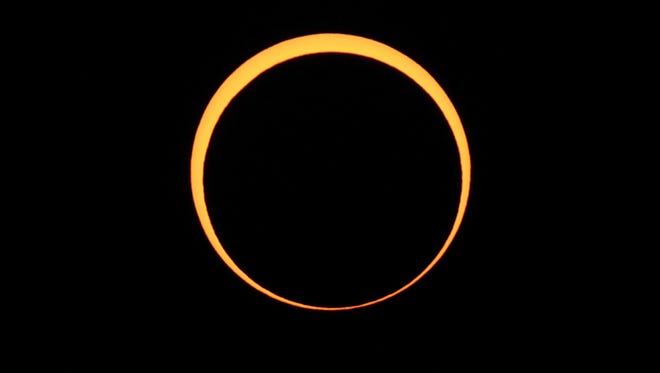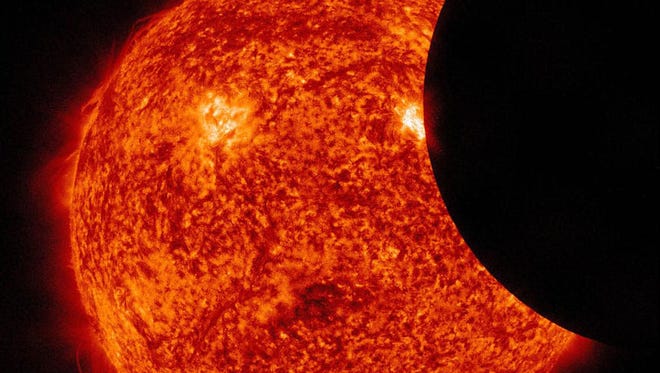What is a solar eclipse?
 Doyle Rice
Doyle Rice
Unless you've been living under a rock, you've probably heard about the solar eclipse on Aug. 21. So what is a solar eclipse, anyway?
A total solar eclipse occurs when the moon passes between the sun and the Earth. The moon appears to completely cover the disk of the sun. By blocking the sun's light, the moon casts a shadow that turns day into an eerie twilight here on Earth.
Eclipses occur because of the special coincidence of the moon and the sun being the same size to our eyes. The sun is 400 times wider than the moon, but it is also 400 times farther away, so they appear to be the same size in the sky.

If you live in the "path of totality" — the 67-mile-wide area in which the moon's shadow sweeps across the Earth's surface — you'll see a total solar eclipse, weather permitting.
That path will cross parts of 12 states, all the way from Oregon to South Carolina.
If you're not in that path and skies are clear, you're still guaranteed to see a partial eclipse, in which only part of the sun will be blocked by the moon.

A partial eclipse will be visible in all of North America, parts of South America, western Europe and Africa. While a partial eclipse is still cool, you won’t notice your surroundings getting dark.
When the moon does eclipse the sun, it produces two types of shadows on Earth: The umbral and penumbral shadows. The umbral shadow is the relatively small point on Earth where you'll see a total eclipse.
The penumbral shadow is the much larger area on Earth, where a partial eclipse will be visible.

In addition to total and partial eclipses, sometimes annular eclipses occur. An annular eclipse happens when the moon covers the sun's center, leaving the sun's visible outer edge to form a “ring of fire” or "annulus" around the moon.